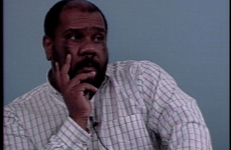
This section comprises taped interviews with artists, architects, musicians, critics and other creative practitioners, recorded in conversation with Video Data Bank staff, colleagues from the School of the Art Institute faculty, and others knowledgeable about the particular interviewees work.
The first interview dates from 1976, the year of VDB’s official inauguration, and VDB continues to add to the collection to this day, recording and producing approximately ten new interviews a year. Many of the interviewees are guests of SAIC departments, such as the Visiting Artists program or Conversations at the Edge screening series, or invitees of the Society for Contemporary Art. The VDB interviews supplement these visits, allowing for an in-depth conversation that underlines the development of an artist's practice.
In this 2004 interview, Kori Newkirk (b.1970) describes his lifelong apprehension of being rooted in any one place for too long. Asserting that the School of the Art Institute of Chicago was the fifth school he attended in four years, Newkirk begins by describing the fortuitousness of his relocation to Chicago following his expulsion from Cooper Union. Recounting how he fled from the fiber department in favor of painting, Newkirk details how it was a studio visit from Deborah Kass and an exchange program to England that crystallized his burgeoning ideas about “painting without making paintings.”

In this interview, Kori Newkirk (b.1970) describes his interest in the space that exists between categories. Hailing from the Bronx, earning a BFA at the School of the Art Institute of Chicago (SAIC), and finally settling on Los Angeles as his base of operations, Newkirk has always been motivated by a desire to eschew provincialism. In this conversation, he discusses the idea of regional identity, his complex relationship with the Los Angeles art community, and how his experience as a student at SAIC helped him move beyond the boundaries of a simple material definition of painting.
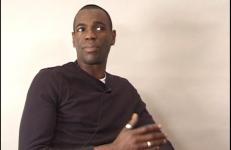
A historical interview originally recorded in 1983.
Interview by Joan Livingstone.
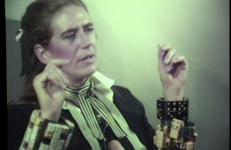
Growing up in the early computer age, around machines like the Commodore 64, had a formative effect on Marisa Olson and her subsequent artistic career. Now operating across a diverse spectrum of media including video, performance, and even the internet itself, she creates work that simultaneously comments upon and instrumentalizes the potential of digital machines as well as the global networks they’re linked to. However, her work is not circumscribed within the boundaries of these systems’ technical specificity.
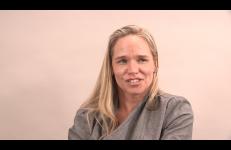
French performance artist Orlan uses her own body as a sculptural medium. Since 1990, she has worked on La Reincarnation de Sainte-Orlan, a process of plastic surgeries that she “performs,” making elaborate spectacles with surgeons dressed in sci-fi costumes and broadcasting the operations live via satellite to galleries worldwide. By exploring a total transformation of self, Orlan delves into issues of identity and the malleability of the flesh. She lives and works in Paris, exhibiting and performing internationally.
Interview by Shay Degrandis, via translator.
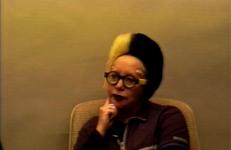
Born and raised in Japan and a resident of New York since 1976, Eiko Otake is a movement-based, interdisciplinary artist. She worked for more than 40 years as Eiko & Koma, but since 2014 has been working on her own projects. Her works often investigate themes of death and dying, history, and the persistence of collective memory. Eiko has also broadened her collaborative practice to create interdisciplinary work with artists from different backgrounds and disciplines, both alive and deceased.
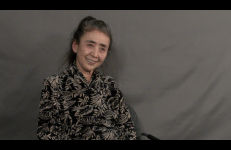
Ulrike Ottinger is a prolific German filmmaker whose work includes Madame X (1977), Ticket of No Return (1979), Freak Orlando (1981), Johanna D'Arc of Mongolia (1989), Countdown (1989), and Exile Shanghai (1997). Starting her visual arts career in Munich and Paris in painting, photography, and performance, Ottinger’s commitment to film took off with her move to Berlin.
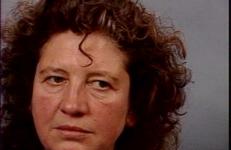
Media artist Cyrille Phipps has been involved with numerous alternative media and lesbian activist projects, including Dyke TV and the Gay and Lesbian Emergency Media Campaign. Her video projects include Respect Is Due (1991), Black Women, Sexual Politics and the Revolution (with Not Channel Zero, 1992), Our House: Gays and Lesbians in the Hood (with Not Channel Zero, 1992), Sacred Lives, Civil Truths (with Catherine Saalfield, 1993), Dreaming Ourselves...
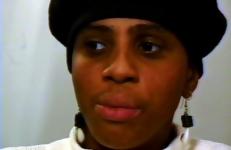
Ingrid Pollard is a photographer living in London. Her photographic works, generally of people and landscape, serve to provide a human context for issues of transmigration and “fleeting” identity. Combining personal photographs with traditional views of the English countryside, Pollard questions as well as reconstructs the concept of “Britishness.” In doing so, Pollard also scrutinizes the location of the “other,” and contrasts actual physical similarity or material likeness of people and places with perceived or socially constructed difference.
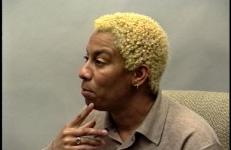
Tom Poole is an organizer of many things. Counting arts administrator, media facilitator, and activist among the many titles he has held over the years, Poole currently brings all these capacities to bear as the executive director of the Pittsburgh Community Television (PCTV) station. In his contribution to the On Art and Artists series, Poole discusses his early foray into media activism as a member of the video art collective Black Planet Productions.
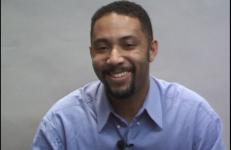
Milton Resnick was born in Bratslav, Russia in 1917, and immigrated to the United States in 1922. Resnick was one of the few survivors of the second generation Abstract Expressionists, and is known for his large, thickly painted abstract canvases. Like other painters of the time, Resnick was striving for an overall quality to his paintings, a way to unite the foreground and background. While others moved toward throwing or dragging quantities of paint across the face of the canvas, Resnick retained a particularly personal and impassioned relation to brush painting.
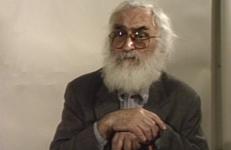
In this interview with Melika Bass, a Chicago-based filmmaker and installation artist, Camilo Restrepo discusses how he became a filmmaker and how he chooses to document his native home of Colombia. After pursuing a degree in painting, Restrepo got a “regular job” but found himself pulled back towards creative pursuits. Equipped with a Super 8 camera, he set out to document his home honestly, and without an excess of materials.
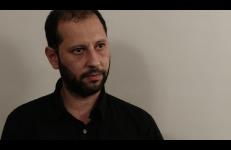
In this interview painter Robert Ryman (b. 1930) describes his artistic influences, recounts his work process, and assesses the use and meaning of painting, both in the 1960s and the 1990s. For Ryman, the focus of his work is not politics or society, but the “problem of painting.” This interview sheds light not only on his method, which he calls an “intuitive approach,” but also on the artist’s ongoing investment in the physicality of scale, surface and materiality.
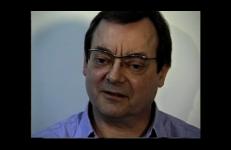
Joe Sacco is a cartoonist who has contributed to a wide range of comic magazines including Drawn and Quarterly, Prime Cuts, Real Stuff, Buzzard, and R. Crumb’s Weirdo; he continues to illustrate the semi-regular Painfully Portland cartoon strip for the Willamette Week. He was a recipient of the prestigious American Book Award in 1996 for his work Palestine (1996), which combines techniques of eyewitness reportage with comic strip storytelling.
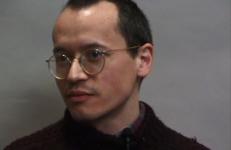
Juan Sanchez explores his Puerto Rican heritage and the issue of Puerto Rican independence through his work as an artist and writer. Combining painting, photography, collage, and printmaking techniques, Sanchez’s art joins images of contemporary barrio life with memories of Puerto Rico, and addresses a fragmented Latino community fraught with political resistance and cultural alienation.
Interview by Bibiana Suarez.
A historical interview originally recorded in 1990.
